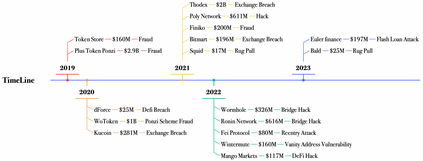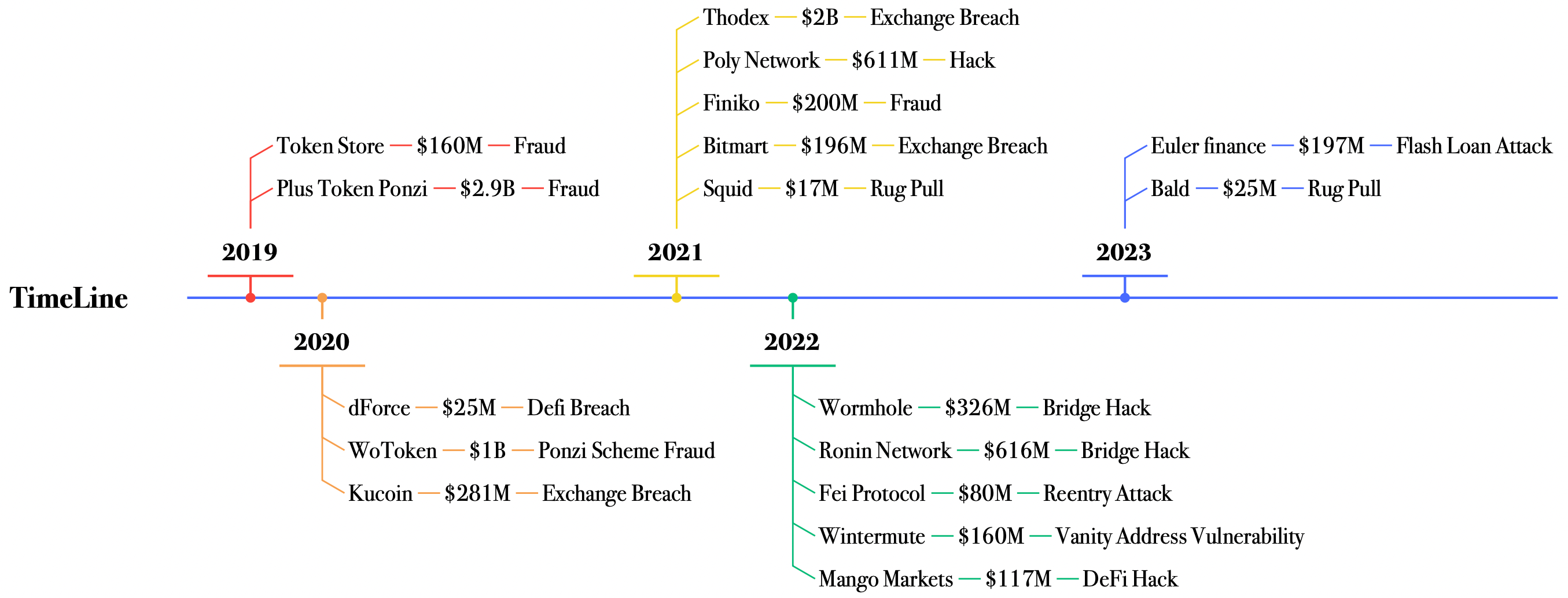In recent years, blockchain technology has introduced decentralized finance (DeFi) as an alternative to traditional financial systems. DeFi aims to create a transparent and efficient financial ecosystem using smart contracts and emerging decentralized applications. However, the growing popularity of DeFi has made it a target for fraudulent activities, resulting in losses of billions of dollars due to various types of frauds. To address these issues, researchers have explored the potential of artificial intelligence (AI) approaches to detect such fraudulent activities. Yet, there is a lack of a systematic survey to organize and summarize those existing works and to identify the future research opportunities. In this survey, we provide a systematic taxonomy of various frauds in the DeFi ecosystem, categorized by the different stages of a DeFi project's life cycle: project development, introduction, growth, maturity, and decline. This taxonomy is based on our finding: many frauds have strong correlations in the stage of the DeFi project. According to the taxonomy, we review existing AI-powered detection methods, including statistical modeling, natural language processing and other machine learning techniques, etc. We find that fraud detection in different stages employs distinct types of methods and observe the commendable performance of tree-based and graph-related models in tackling fraud detection tasks. By analyzing the challenges and trends, we present the findings to provide proactive suggestion and guide future research in DeFi fraud detection. We believe that this survey is able to support researchers, practitioners, and regulators in establishing a secure and trustworthy DeFi ecosystem.
翻译:暂无翻译


























































